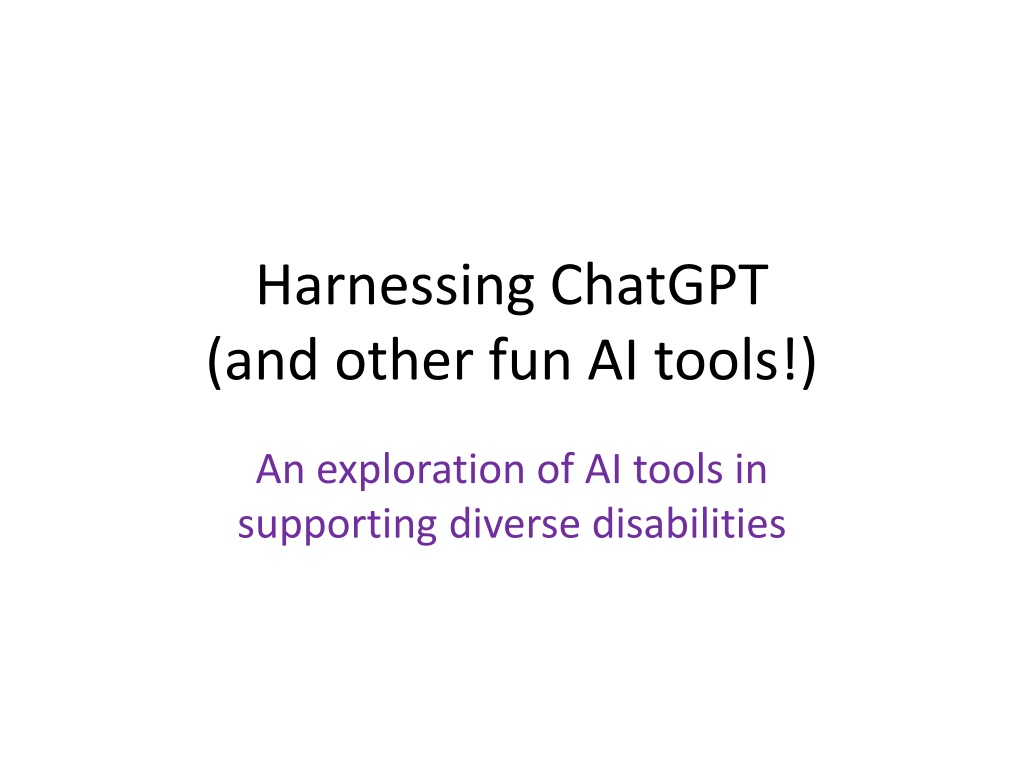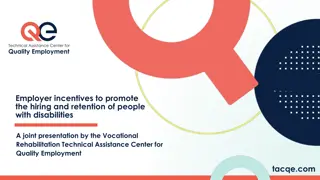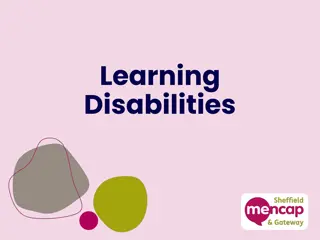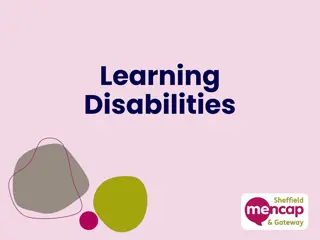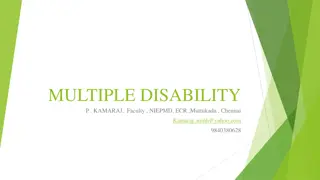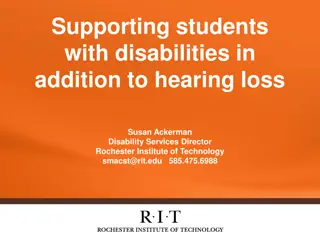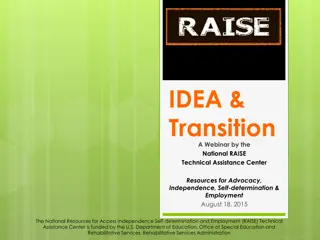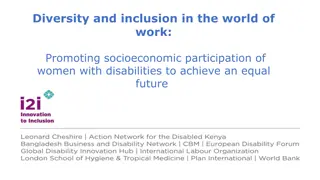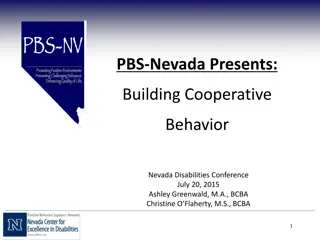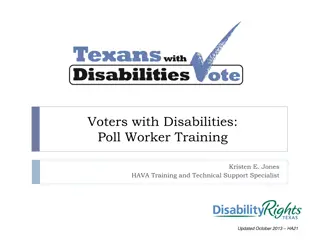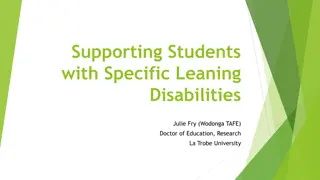Exploring AI Tools for Diverse Disabilities
Uncover the role of AI tools like ChatGPT in supporting various disabilities. Dive into the history of AI, understand what ChatGPT does, debunk common myths around GPTs, and discover how these tools can aid but not replace human work. Learn about their limitations and potentials in enhancing human capabilities.
Download Presentation

Please find below an Image/Link to download the presentation.
The content on the website is provided AS IS for your information and personal use only. It may not be sold, licensed, or shared on other websites without obtaining consent from the author. Download presentation by click this link. If you encounter any issues during the download, it is possible that the publisher has removed the file from their server.
E N D
Presentation Transcript
Harnessing ChatGPT (and other fun AI tools!) An exploration of AI tools in supporting diverse disabilities
Introduction About Jennifer and Jody About Hulme Resources Inc. Learning Goals for Today! Start with a survey ..
AI history 1950s: Birth of AI-The concept of Artificial Intelligence is introduced. 1960s: Early Experiments-Simple AI programs are developed, like chatbots. 1970s-1980s: Growth & Challenges- AI grows but faces setbacks due to high expectations. 1990s: The Internet Era-The internet provides more data and opportunities for AI. 2000s: AI Becomes Popular- AI starts to be used in phones, cars, and homes. 2010s: AI Gets Smart- AI can play games, recognize speech, and more. 2020s: AI Today- AI helps in many fields and continues to advance.
What is ChatGPT, Co-Pilot, Gemini GPT, or Generative Pre-trained Transformer, is a type of artificial intelligence program designed to understand and generate human-like text based on the information it has learned from a vast amount of reading material. It can answer questions, write essays, create stories, and more, by predicting what comes next in a sentence, much like how humans form thoughts and sentences. In other words .
In simpler terms. GPT is like a smart robot that can read and write. It learns by looking at lots of books and websites. Then, it can answer questions and help write stories or messages, trying to talk just like a person would.
Squashing the Myths Truth: GPTs are tools designed to assist and enhance human work, not replace it. They help with tasks like writing and answering questions but can t replicate human emotions, creativity, or judgment. Myth 1: GPTs Can Replace Humans Truth: GPTs learn from lots of information online, but they don t always know if that information is true or false. They can make mistakes or repeat incorrect information found in their training data. Myth 2: GPTs Are Always Right Truth: While GPTs can process and generate language in a way that seems like they understand, they don t have real understanding or awareness. They re using patterns from the data they ve been trained on. Myth 3: GPTs Understand Everything Truth: GPTs can reflect biases present in the data theywere trained on. Developers are working on reducing these biases, but it s important to be aware of this issue. Myth 4: GPTs Are Biased-Free
More Myths Truth: GPTs don t learn or adapt after their initial training. Updates and improvements are made by humans retraining the model with new data. Myth 5: GPTs Can Learn and Evolve on Their Own Truth: GPTs are designed to be user-friendly and accessible to everyone, not just people with technical backgrounds. They re used in many everyday applications, from chatbots to writing aids. Myth 6: GPTs Are Only for Tech Experts Truth: GPTs can recognize and generate text that mimics emotional responses, but they don t actually feel or understand emotions. Their responses are based on patterns learned from data. Myth 7: GPTs Can Fully Understand Human Emotions Truth: While GPTs can generate new content, such as stories or music, their creativity is based on remixing and recombining elements they ve seen in their training data, not true original thought. Myth 8: GPTs Are Creative in the Same Way Humans Are Truth: GPTs can provide information and suggestions, but they don t have the ability to make decisions, especially those involving complex human values or ethics. Decision-making should always be done by humans. Myth 9: GPTs Can Make Decisions for You Truth: Like any technology, GPTs can be vulnerable to security risks. It s important to use them responsibly and be aware of potential privacy concerns, especially when sharing sensitive information. Myth 10: GPTs Are Secure and Can t Be Hacked
Uses for GPTs Talking and Writing: They can chat or help write things down, making it easier to share thoughts and feelings. EXAMPLE
Another use: Learning Fun: They can make learning new words and how to talk better more fun and just right for each person s pace. EXAMPLE
Another use-1: Practicing Talking to Others: They can pretend to be different people to practice having conversations with, which helps with making friends. EXAMPLE
Another use-2: Doing Things on Your Own: They can give step- by-step help for everyday tasks, helping people do more things by themselves.
Another Use-3: Being Creative: They can help come up with stories or make art, which is great for expressing oneself. EXAMPLE
Another Use-4: Help for Caregivers: They can also give tips and ideas to those who help provide services and supports to others EXAMPLE
Enhancing support services with AI Streamlining care coordination and planning Training and resource sharing through Revolutionizing Social Services
Things to pay attention to: Broader implications for inclusivity and accessibility ChatGPT s role in shaping future social service practices Potential challenges and ethical considerations
QUESTIONS? Hulme Resources Jennifer@hulmeresources.com Jody@hulmeresources.com Hulmiversity Harmonies
